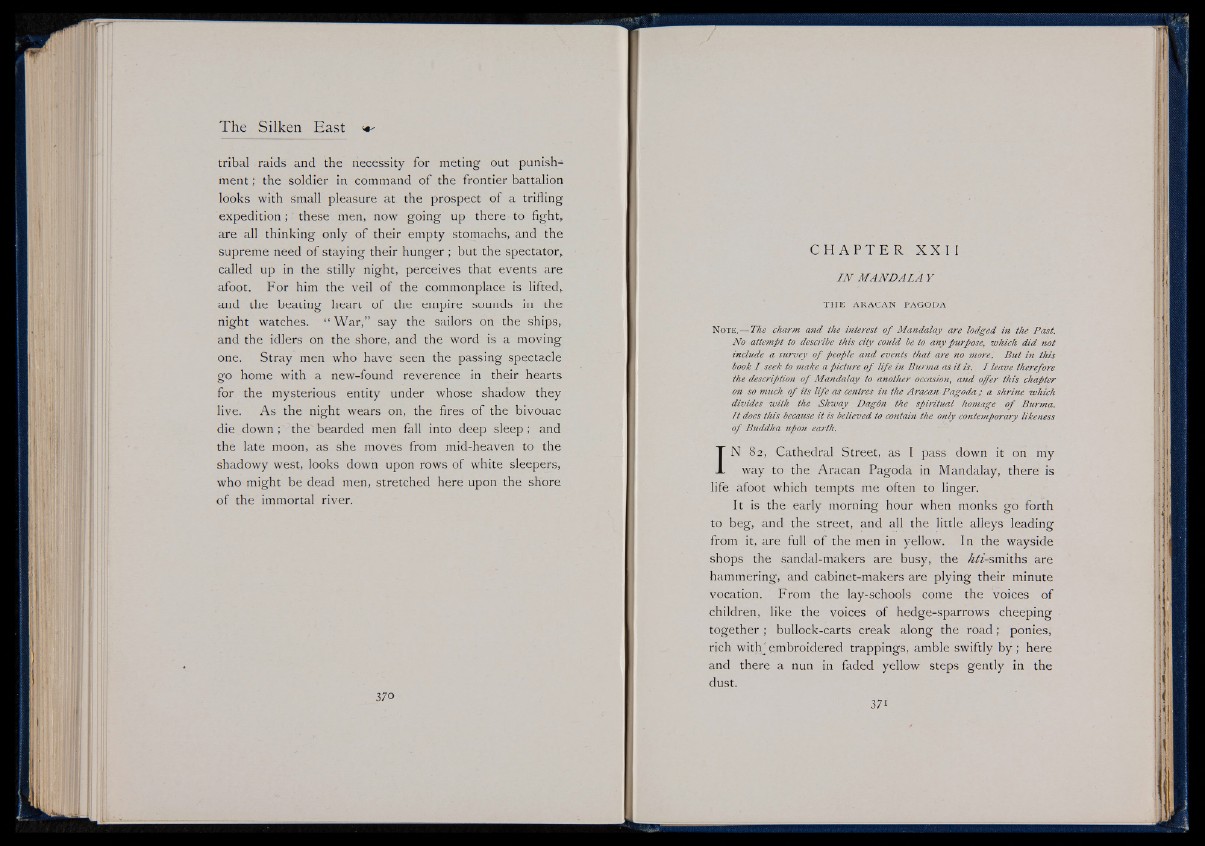
tribal raids and the necessity for meting out punishment
; the soldier in command of the frontier battalion
looks with small pleasure at the prospect of a trifling
expedition; these men, now going up there to fight,
are all thinking only of their empty stomachs, and the
supreme need of staying their hunger ; but the spectator,
called up in the stilly night, perceives that events are
afoot. For him the veil of the commonplace is lifted,
and the beating heart of the empire sounds in the
night watches. “ War,” say the sailors on the ships,
and the idlers on the shore, and the word is a moving
one. Stray men who have seen the passing spectacle
go home with a new-found reverence in their hearts
for the mysterious entity under whose shadow they
live. As the night wears on, the fires of the bivouac
die down ; the bearded men fall into deep sleep; and
the late moon, as she moves from mid-heaven to the
shadowy west, looks down upon rows of white sleepers,
who might be dead men, stretched here upon the shore
of the immortal river.
C H A P T E R X X I I
I N M A N D A L A Y
THE ARACAN PAGODA
N ote. — The charm and the interest o f Mandalay are lodged in the Past.
No attempt to describe this city could be to any purpose, which did not
include a survey o f people and events that are no more. But in this
book I seek to make a picture o f life in Burma as it is. I leave therefore
the descHption o f Mandalay to another occasion, and offer this chapter
on so much o f its life as centres in the Aracan Pagoda ; a shrine which
divides with the Shway Dagon the spiritual homage o f Burma.
Tt does this because it is believed to contain the only contemporary likeness
o f Buddha upon earth.
IN 82, Cathedral Street, as I pass down it on my
way to the Aracan Pagoda in Mandalay, there is
life afoot which tempts me often to linger.
It is the early morning hour when monks go forth
to beg, and the street, and all the little alleys leading
from it, are full of the men in yellow. In the wayside
shops the sandal-makers are busy, the ^¿f-smiths are
hammering, and cabinet-makers are plying their minute
vocation. From the lay-schools come the voices of
children, like the voices of hedge-sparrows cheeping
together ; bullock-carts creak along the road; ponies,
rich withj embroidered trappings, amble swiftly b y ; here
and there a nun in faded yellow steps gently in the
dust.